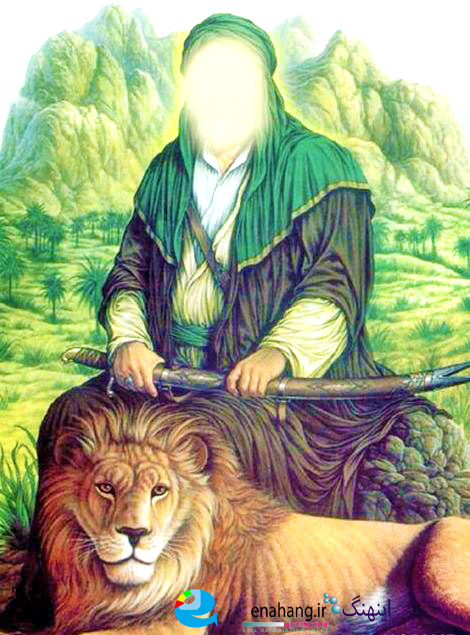
Kashafrud river - رودخانه کشف رود
اینجا درباره رودخانه کشفرود ایران مینویسم
Kashafrud river - رودخانه کشف رود
اینجا درباره رودخانه کشفرود ایران مینویسمعلی شیر خدا، شاه عرب و شیخ نخودکی
کشفرود، ریزرود مهم زیاد داره که در طول همه فصل های سال خروشان باشه. از آن جمله به ریزرودهای روستای نخودک (ایثارگران فعلی) و خین عرب اشاره میکنم.
نخودک و خین عرب رو به دلیل موقعیت اجتماعی مسبوق به سابقه ای که داشته باهم می آوریم. حتی الآن هم که ارتباطات اینترنت فراگیر نشده، بسیاری این دو را باهم معرفی میکنند.
چند روز پیش داشتم از جای حرم رد میشدم که یه آقایی کارت طب سنتی رو با دو نام همراه هم داد به من. به سایر زائرین و مسافران میداد، به من هم داد. یکی از نام ها حاج آقا عرب بود و دیگری الآن یادم نیست. یاد نخودکی و یار همراه او در خین عرب افتادم.
خین عرب در زمان های قدیم، تا اواسط دهه چهل شمسی و بلکه الآن، شهرت جهانی داشته، و آن را مدیون پزشکان حاذقی چون شیخ نخودکی بوده است.
تا اواسط دهه چهل و حتی دهه هفتاد شمسی، مناطق نخودک و خین عرب سرشار آب و آبادانی بوده است. قلعه نخودک شهرت داشت و رود خروشان خین عرب، مردم را یاد اروند رود می انداخت. در آن مناطق شغل اغلب مردم کشاورزی بوده است. بیش از هفتاد درصد مردم ایران تا همین چند سال پیش که شهرها چنین زرق و برق و امکاناتی به رخ نمیکشیدند، کشاورزی بوده است.
نام اصلی شیخ نخودکی، شیخ حسنعلی مقدادی اصفهانی بوده است. مردم او را به سبب مداوایی که میکرده است میشناختند. نقل است که او کیمیاگری (بیوشیمی و فراتر از آن) هم میکرده است و در آن زبانزد بوده است. شخصی که در خین عرب همکار بوده است را نیز مردم با شاه عرب (علی، شیر خدا) میشناختند.

این ها، نه تنها به طبابت مشغول بودند، بلکه تبلیغ هم میکردند. از آنجا که طب شیمیایی در آن زمان سر بوده و رسانه دست طب سنتی ایران نبوده است، با نام خود و با نام روستا، تبلیغ طبابت و امامت را میکردند.

آنها که مداوا میشدند و آنها که نیازمند بودند، دست شیخ نخودکی را واسط خیر میدانستند و به او مراجعه میکردند. مردم پس از بستری شدن شیخ نخودکی در بیمارستان منتصریه، جای باغ ملی مشهد نزدیک بود نظم آنجا را به هم بزنند که وی از آنجا میرود. در همان زمان ها هم رحلت میکند و مقبره او در بست شیخ طوسی حرم امام رضا تا سالها پس از وفات محل زیارت او میشود. هنوز که هنوزه زائران بسیاری در جستجوی مقبره شیخ نخودکی به بست شیخ طوسی می آیند تا او را زیارت کنند.
شیخ نخودکی تا زمانی که زنده بود رونق کشاورزی و پزشکی سنتی در ایران بود. روستای نخودک و خین عرب، هر دو به واسطه حضور این اطبا تا همین دهه هفتاد شمسی رونق کشاورزی خود را حفظ کرده بودند.
__
Kashafrud has many important tributaries that are flowing throughout the year. Among them, I would like to mention the tributaries of the village of Nakhodk (currently Izagaran) and Khin Arab.
We bring Nakhodk and Khin-e-Arab together because of their historical social status. Even now, when internet connections are not widespread, many people introduce the two together.
A few days ago, I was passing by the shrine when a gentleman gave me a traditional medicine card with two names attached to it. He gave it to other pilgrims and travelers, and he gave it to me too. One of the names was Hajj Agha Arab and I don’t remember the other now. I remembered Nakhodki and his companion in Khin Arab.
Khin Arab was world famous in ancient times, until the mid-1960s and even now, and it owes it to skilled doctors like Sheikh Nakhodki.
Until the mid-1960s and even the 2000, the Nakhodk and Khin Arab areas were rich in water and prosperity. The Nakhodak Castle was famous, and the roaring Khin Arab River reminded people of the Arvand River. In those areas, most people's jobs were agriculture. More than seventy percent of the people of Iran were farmers until a few years ago, when cities did not boast such splendor and facilities.
Sheikh Nakhodaki's real name was Sheikh Hassan Ali Muqaddadi Isfahani. People knew him for the healing he practiced. It is said that he also practiced alchemy (biochemistry and beyond) and was famous for it. People also knew the person who worked in Khin Arab like the king of Arab (Ali, the Lion of God).
They were not only engaged in medicine, but also preached. Since chemical medicine was the mainstay at that time and the media was not available to traditional Iranian medicine, they preached medicine and Imamate (leadership) under their own names and the names of the villages.
Those who were being treated and those who were in need considered Sheikh Nukhodaki's hand as a means of good and would turn to him. After Sheikh Nukhodaki was hospitalized in the Montaseriyeh Hospital, the place where the National Garden of Mashhad was located, people were about to disrupt the order of the place where he was leaving. At the same time, he passed away and his tomb in the Sheikh Tusi Bast, the shrine of Imam Reza, became a place of pilgrimage for many years after his death. Even today, many pilgrims in search of Sheikh Nukhodaki's tomb come to Sheikh Tusi Bast to visit him.
Sheikh Nukhodaki was a prosperous farmer and traditional medicine in Iran while he was alive. The villages of Nukhodak and Khin Arab, both of which had maintained their agricultural prosperity due to the presence of these doctors until the 2000s.